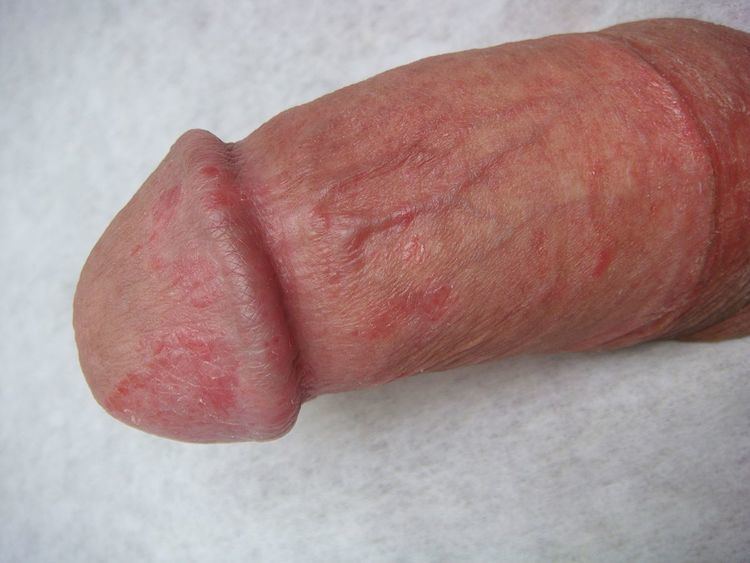ICD-9-CM 607.1 DiseasesDB 1229 | ICD-10 N48.1 ICD-O /bæləˈnaɪtɪs/; MedlinePlus 000862 | |
 | ||
Balanitis is inflammation of the glans penis. When the foreskin is also affected, it is termed balanoposthitis.
Contents
Balanitis on boys still in diapers must be distinguished from redness caused by ammoniacal dermatitis. The word is from the Greek βάλανος balanos "acorn".
Signs and symptoms
Symptoms can include:
Complications
Recurrent bouts of balanitis may cause scarring of the preputial orifice; the reduced elasticity may lead to pathologic phimosis.
Cause
Inflammation has many possible causes, including irritation by environmental substances, physical trauma, and infection such as bacterial, viral, or fungal. Some of these infections are sexually transmitted diseases.
It is less common among people who are circumcised as in many cases the foreskin contributes to the disease. Both not enough cleaning and too much cleaning can cause problems. Diabetes can make balanitis more likely, especially if the blood sugar is poorly controlled.
It is important to exclude other causes of similar symptoms such as penile cancer.
Diagnosis
Diagnosis may include careful identification of the cause with the aid of a good patient history, swabs and cultures, and pathological examination of a biopsy.
Types
Treatment
Initial treatment in adults often involves pulling back the foreskin and cleaning the penis.
Epidemiology
Balanitis "is a common condition affecting 11% of adult men seen in urology clinics and 3% of children" in the United States; globally balanitis "may occur in up to 3% of uncircumcised males".
Other animals
In dogs, balanoposthitis is caused by a disruption in the integumentary system, such as a wound or intrusion of a foreign body. A dog with this condition behaves normally, with the exception of excessive licking at the prepuce, and a yellow green, pus-like discharge is usually present. In sheep (rams/wethers), ulcerative enzootic balanoposthitis is caused by the Corynebacterium renale group (C. renale, C. pilosum & C. cystidis). For the condition in bulls, caused by a virus see Bovine herpesvirus 1. Balanoposthitis is believed to have contributed to the decline to near-extinction of Gilbert's potoroo.
